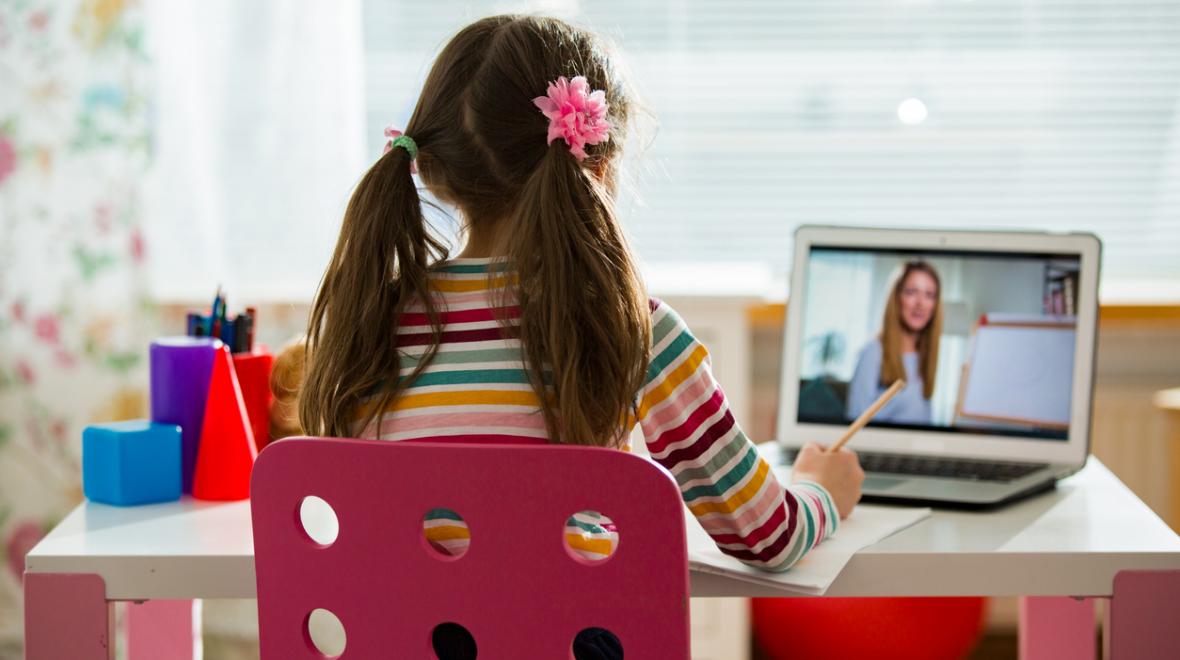
Have a remote learner or two under your roof? Help them adjust to a new school year with these five strategies for creating a home environment that’s conducive to learning.
Create multiple ‘desk’ options throughout your home.
While helpful for combating restlessness in both siblings and only children, designating a few areas around the home as “learning spots” may be crucial if you have multiple kids who need personal space to focus. These spots don’t have to be fully decked-out desk areas — it can be as simple as getting a lap desk that your child can take to the living room couch or their bedroom to do their lessons. The blog DIY Passion has a great tutorial for making an easy no-sew desktop lap pillow. You could also create a reading corner with a floor pillow and blankets, or just pull a favorite chair you already have over to a special spot during the day.
A great way to break the monotony of sitting in front of a laptop is to find creative ways to use different areas of your home as learning spots. Your kids can rotate from one spot to another throughout the day, reinvigorated by a change in their surroundings.
Indulge in some of the back-to-school rituals.
Why the heck not, right? Finding small bits of normal can make a big difference during these strange times, so if you’re able, go ahead and get some new school supplies, such as colorful pencils and cute notebooks — perhaps even one with a sequined cover? How about a new lunch box? It may not be a bad idea to keep up the tradition of packing lunches the night before so when your kids are hungry for their midday meal the next day, lunch is ready, even if — and especially when — you’re not.
And while kids may not need the full back-to-school wardrobe for attending school in person, there’s definitely something exciting about having a few cool new items of clothing, the anticipation of new attire making it a bit easier to get going in the morning.
Incorporate easy storage ideas to keep school spaces tidy.
There’s no getting around it: There’s going to be a lot more stuff around the house with school happening remotely, so investing in some new storage items can help keep everything in its place. Magazine racks are great for loading up with books and binders at the end of the day; inexpensive portable shower caddies can contain everything from pens and pencils to headphones; and having a few extra storage baskets on hand as catchall “dumping grounds” will likely come in handy.
Involve the kids in customizing their learning space.
Generally speaking, we all know buy-in is critical with kids, so letting them pick out items to decorate and personalize their learning space can get them more excited about settling in each weekday. This could be anything from a poster or special calendar to a small figurine or stuffed animal — you know your kid, so you know what would get them amped — with the idea being to get them involved so they feel invested.
Introduce typical classroom characteristics.
Take any opportunity to make school at home feel more like the real deal. This can be in the form of a new whiteboard, a map of the world, a name tag for their desk or a bulletin board to share finished projects. Need more ideas? Ask your kids what their favorite thing was about their classroom last year and see if it’s something you can re-create in your own space.
And when the school day is done, anything you can do to “close the classroom door” will help to keep school and home separate, even when they’re under the same roof. Put school supplies away, clear temporary “learning spots” or literally close the door if you have one room where school happens.
Most importantly, whatever you do or don’t do, know that that is enough. Every parent is doing their best at every moment, and you need to pick your moments of spending extra energy and money. So, do what you can and let the rest go!











